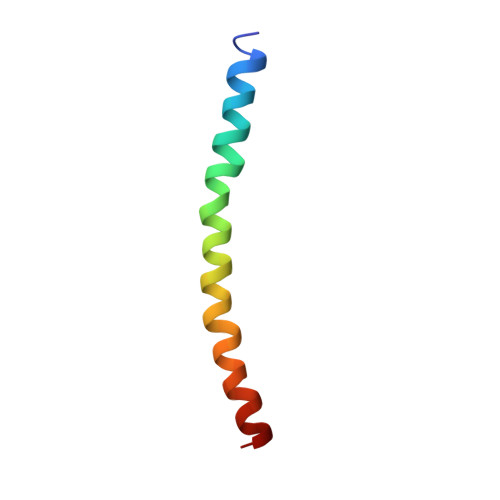Model-building studies of Inovirus: genetic variations on a geometric theme.
Marvin, D.A.(1990) Int J Biol Macromol 12: 125-138
- PubMed: 2078529
- DOI: https://doi.org/10.1016/0141-8130(90)90064-h
- Primary Citation of Related Structures:
1IFD, 2IFO - PubMed Abstract:
Inovirus (filamentous bacteriophage) is a simple system for studying the rules by which protein primary structure (amino acid sequence) controls secondary and higher order structure, and thereby function. The virus occurs naturally as a number of different strains with similar secondary and higher order structure, but the protein subunit that assembles to form the virion coat has quite different primary structures in different virus strains. Despite these differences in primary structure, the subunits of all strains have much the same size, about 50 residues, which are distributed by type in much the same way into three domains of primary structure: a collection of acidic residues in the N-terminal region, a hydrophobic domain of about 19 residues near the middle, and a collection of basic residues near the C-terminus. Each subunit can be closely approximated by an alpha-helix with its long axis roughly parallel to the fibre axis, sloping from large to small radius in the virion and interleaving between subunits in the next turn or level. The acidic residues near the N-terminus of the subunit face outwards on the virion surface, and explain the low isoelectric point of the virion; the basic residues near the C-terminus face inwards, where they neutralize the charge on the DNA at the core of the virion; and the hydrophobic central domain is involved in interactions which bind neighbouring subunits. Detailed X-ray fibre diffraction analysis of one strain gives the subunit structure. Comparative model-building studies of different strains illustrate the common structural principles.
- Department of Biochemistry, University of Cambridge, UK.
Organizational Affiliation:
















